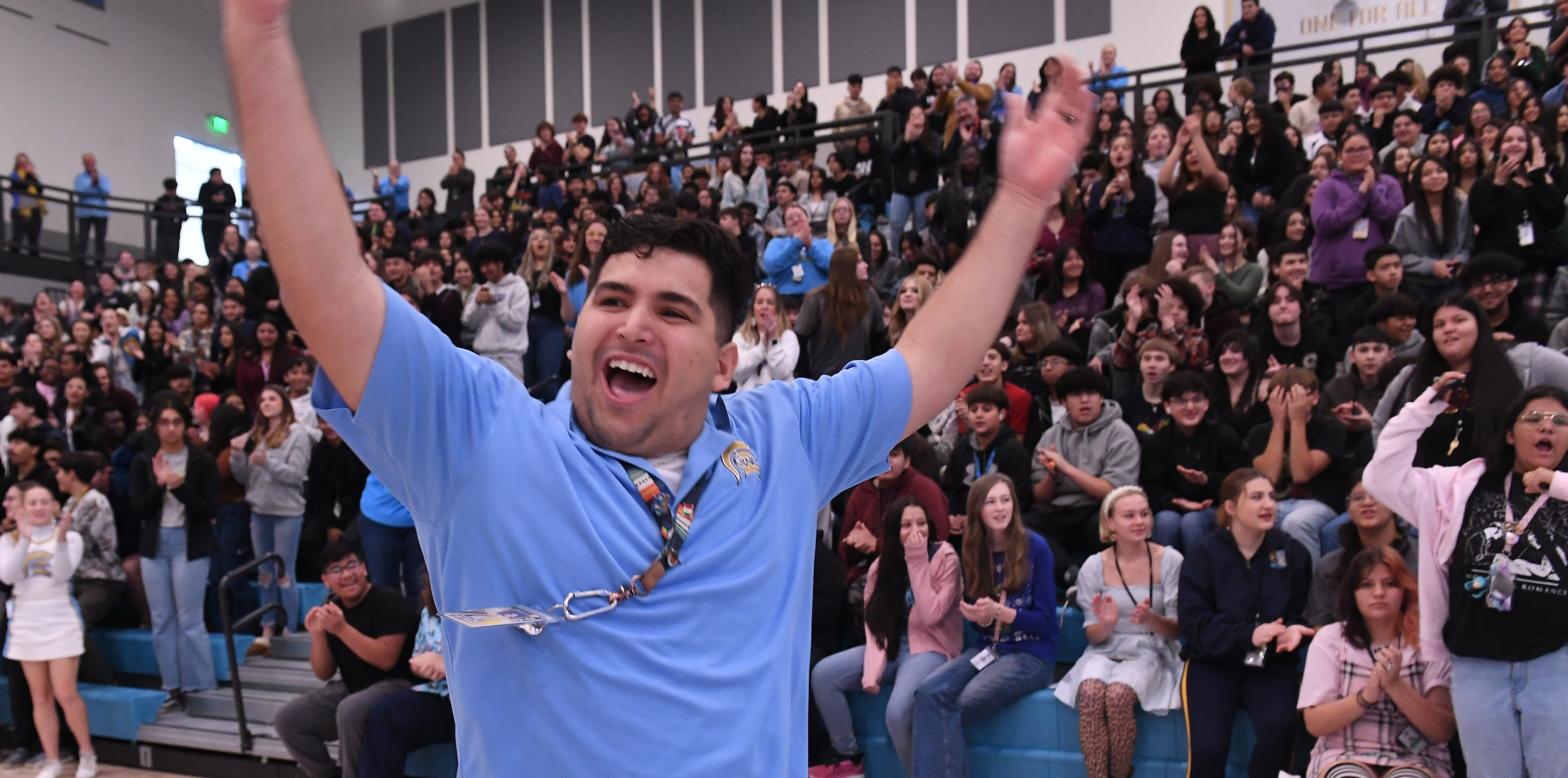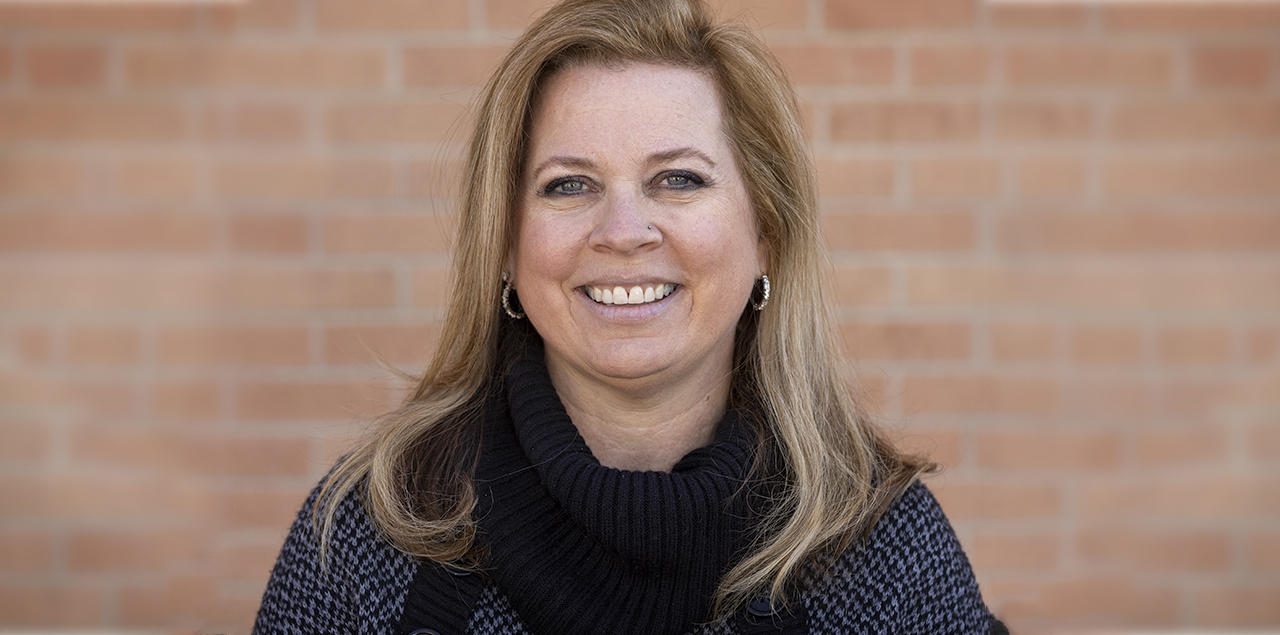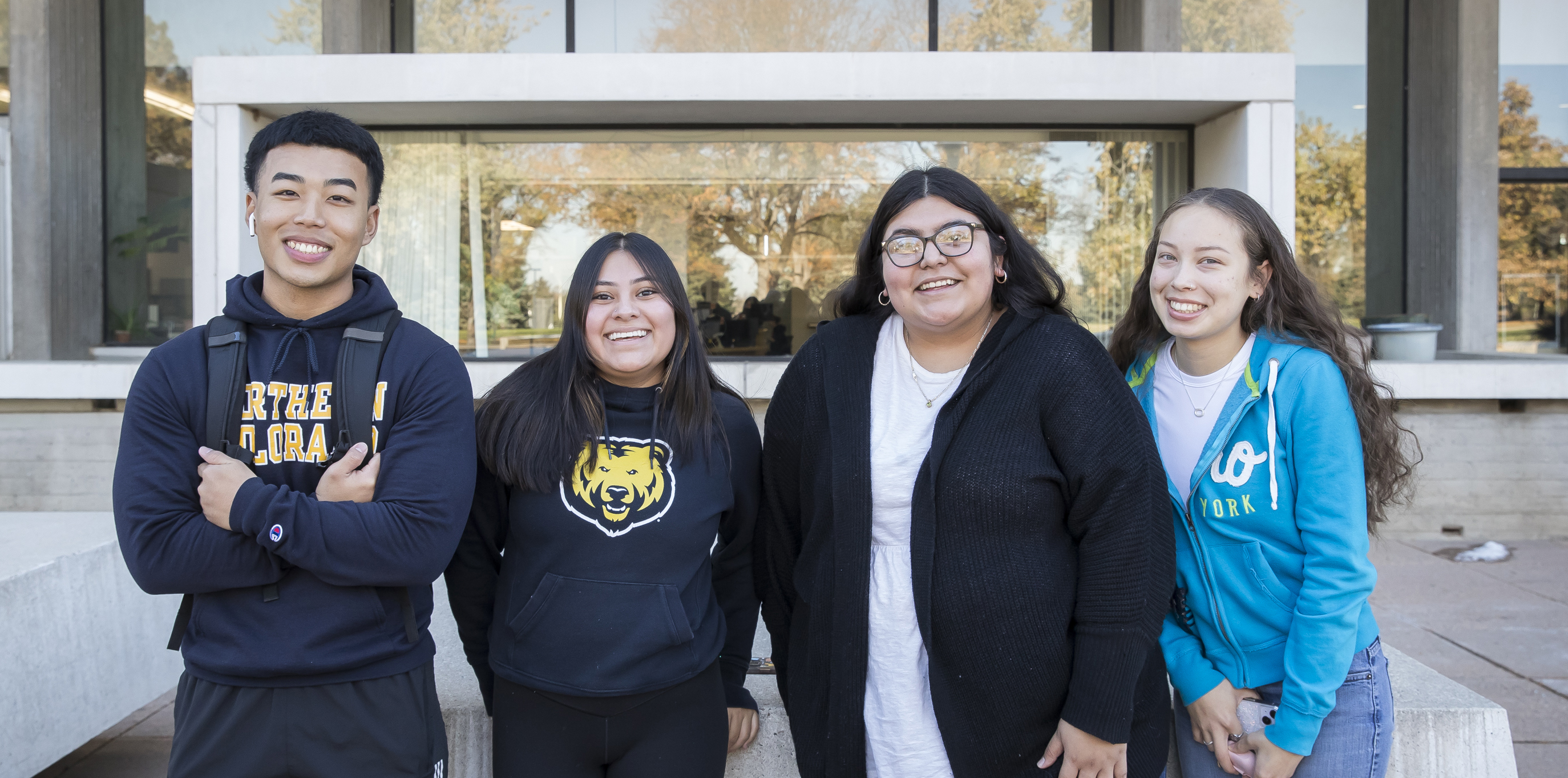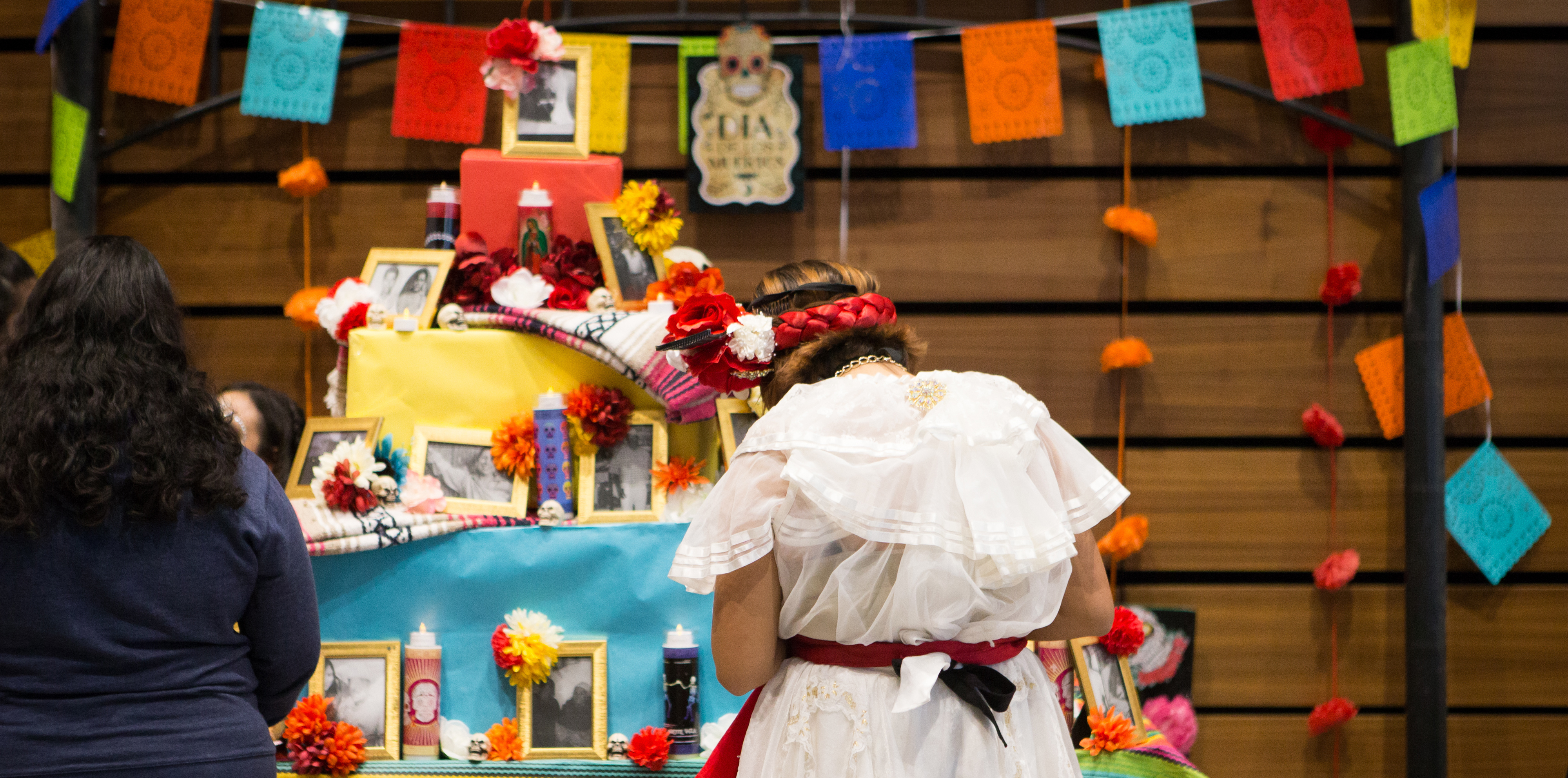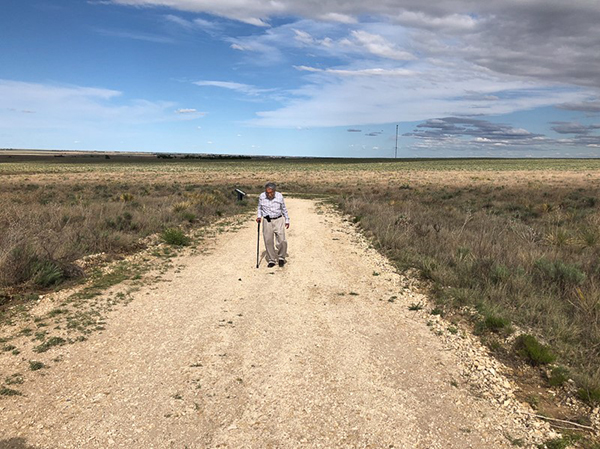
John Tonai (MA '92) discusses the Granada Relocation Camp, also known as Amache, where over 7,000 Japanese and Japanese-Americans were incarcerated from 1942-45, including members of his family.
Tonai is an assistant professor of Photography as well as the lead for the photography program in the School of Art and Design at the University of Northern Colorado. His master's thesis focused on photographing numerous Japanese-American camps throughout America and was titled, "America's Concentration Camps."
Above: John Tonai's father, Minoru Tonai, walks up the gravel road away from the Amache
block where members of his family and he lived. Photo by John Tonai.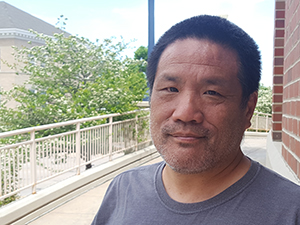
John Tonai.
Listen to his podcast below as he reflects on the camps, stories from his father and other family members who lived at Amache, and the importance in remembering this dark time in American history and the internees' stories.
Read Tonai's Full Interview Transcript
"Back in 1990, I was getting my M.A. here and took a directive study class to photograph Amache, the camp down in southeastern Colorado. I was doing documentary photography primarily of places, and so, I went down there about three times during the semester to photograph the camp just to document because I’ve never been to one. My dad and his family were incarcerated there, so it’s just something for me to learn a little bit about my family history.
I grew up and a lot of textbooks, even today, it’s more of a sidebar, or a sub-paragraph within the broader Homefront of World War II. It just depends on what point-of-view you’re going to take. When they talked about rounding up the people off the coast. They talked about aliens and non-aliens, they didn’t say aliens and U.S. citizens, that’s the two groups that were rounded up: the aliens, the immigrants who were not citizens, and the non-aliens, which are the people born here, which normally we would call them United States citizens. That was the terminology used, so that way, you know, you don’t have to say we’re rounding up U.S. citizens, we’re rounding up non-aliens.
When I first did my project, my project was called, "America’s Concentration Camps." And in '92, I was the third person that I know of that had gone to all 10 camps. And so, everything I did at this time was new territory. And so, when I was thinking of the name for my project, ‘relocation’ was, to me, and still is for a lot of Japanese-Americans, kind of a bad word. Because we weren’t relocated, we were rounded up, kicked up, picked up, and put into prison camps—that’s not a relocation; a relocation is you move people.
And, my answer always was that a relocation camp is a euphemism for a concentration camp just like we call the concentration camps being a euphemism for a death camp. They really aren’t the same thing. If you look up the dictionary term in 1942, if you go to Webster’s dictionary in 1942, what they did to the Japanese-Americans was a concentration camp. And so, you can call it a relocation camp, and a lot of people do, or you can call it a concentration, call it an internment camp. Officially for the National Park Service, they call them Japanese-American Confinement Sites. For the government to call it a relocation, to once again to make it sound as palatable as possible, is the people in California that hated the Japanese there, well, we’re going to relocate them out of your area. That was kind of one of the original goals was they were given the chance to voluntarily leave to go to other parts of the country, to relocate at the time. So, at one point, for the very beginning, it was a relocation. But it never really, I think, meant, they knew it wasn’t going to work. There were just too many people, and not enough places that wanted us to move to.
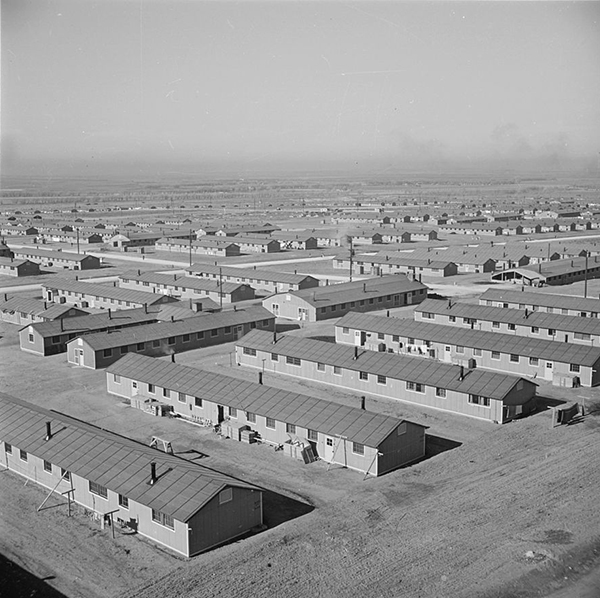
Above: A section of the Granada Relocation Center in December 1942.
Courtesy of the U.S. Department of the Interior.
All of the relocation camps, the barracks were built to the military standards, whatever the standards were, so however they constructed buildings in that area for the military, they constructed it there, too. So, on Amache, they did have insulation inside the barracks. It still leaked weather badly. But some of the places, Gila River in halfway between Phoenix and Tucson, didn’t have insulation when they built it. So, you’re talking 120 degrees in the summer and no insulation. So Amache was lucky in that way they did have insulation in their barracks … some … insulation in the barracks. But yeah, it was mainly a barrack construction and a drywall, or Silatex, which was that little bit of insulation. There was no, like you know, the insulation that we know it, but it was double-layered, so it did somewhat keep it not too bad.
My dad claimed that the first winter it got down to minus-22. Normally, that area may get down to minus-10 if it’s really cold. For he and many of the people, they came from southern California. So, for them, it was really a shock to have that kind of temperature change.
There were different-sized apartments. They had one that was considered the bachelor’s quarters that was small that a couple of people would be in. Then, they went up to, I think up to, 10 people in a room, for the big family rooms. The whole barrack building was 20-by-100 feet and was divided into four apartments basically, so two in the outside were the small ones, and then two in the inside were the large ones.
My grandmother, and then my dad’s older sister, my dad, and my dad’s younger brother. They only had four people in their room, so they actually got real, real lucky that they didn’t have a really cramped room.

Above: John Tonai's father, Minoru Tonai, walks up the gravel road away from the Amache block where members of his family and he lived. Photo by John Tonai.
The camp is unique in all 10 because it’s the only one where the vast majority of the barrack foundations are still there. Because most times, the barracks were put on wooden posts above the ground, and Amache’s the only one where they actually made a concrete foundation and put brick floors and put the barrack on top. So, with the exception of one area, all the foundation is still there. The cemetery is still there; they have several graves, the honor roll for the people who served in World War II and were killed.
There’s remnants here and there of things. At the store, they have like basically their safe room, it’s a concrete room it’s still standing, but pretty much everything else substantial is gone.
Going into the grounds, first, it was weird because I didn’t know what to think. I know driving into it, I was more just amazed by what was there. I knew the block my dad lived in, and I had a map of the camp, so I could drive to his block, walk into his barrack. And it wasn’t until I walked into the front door of his barrack that all the stories he told when I was growing up came flooding back, and so I could see my dad as a 13-year-old kid running around the camp and start remembering a lot of those stories. That happened when I went into the barrack more so than just being on the grounds. The grounds, to me, didn’t at the time, really didn’t speak to me that much. But the barrack did, yeah. And that’s why I decided to do my thesis project on all 10 camps.
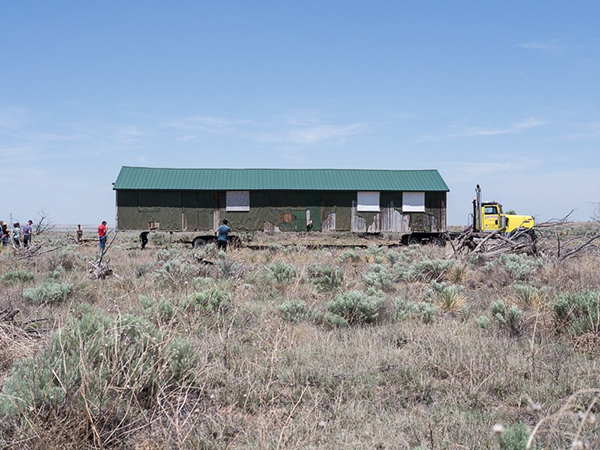
Above: In May, the old rec hall was brought back to Amache and placed on the original stone
foundation at Amache. The Denver Post wrote a story about this event.
Photo by John Tonai.
I think it’s been proven many times over since then is how … how powerful for the people that were in the camps that didn’t want to talk about it after the war, and for the descendants who never really got the story because their relatives didn’t talk about the camps. There’s a lot of strong personal connection and a lot of missing history, and a lot of it personal history, that I think by photographing the camps and people seeing my photographs and being able to then, that actually being the thing that caused them to open up and maybe talk about it. So that was important.
The first time I went back, I think I might’ve found a little toy that my dad’s younger brother played with. Back then, they had these little … you could buy candy in these little glass containers that were different vehicles, so my uncle’s was a Jeep. So, it was a clear, glass container shaped like a Jeep that was filled with candy, and so after you were done with emptying the candy out you could play with the Jeep. So, I found part of the Jeep there.
I thought it was kind of cool, photographed it, and then showed my dad the photograph, and I showed my uncle the photograph, and he goes, “Oh, I used to play with something like that.” And so, that’s when I started realizing that it might’ve been his.
Having been used to probably 10 years of documenting the campsites with no buildings, or very few buildings, on site, I’ve gotten used to the deterioration and the open quality of not having … to have new buildings come on, to have, in the case of Amache, they reconstructed one of the guard towers; they found the old water tower; they reconstructed that and put it back on site. They built, or reconstructed, a barrack, and then they brought back this rec hall.
It’s nice for the education; it’s nice to have people from the education point-of-view understand and to be able to, when they get to the point, of being able to fix them up to see what a block was like, a certain area was like; to understand how bad the conditions were back then.
Culturally, the Japanese-Americans felt a lot of shame even though it was not their fault, they felt shame for this. This guy was telling a story of his mom, and his mom still won’t go back to any of the pilgrimages; she just doesn’t want to have it bring back the bad memories at all. Which I find interesting because I didn’t ask how old his mom was, but I know that the friends with my mom who was 10 through 13 when she was in the camp, same as my uncle, Yutaka. And they just had playtime; they had fun. To them, it wasn’t a big a thing as it would’ve been for somebody who was in their, you know, 18 to 20, and they just got their life going somewhere and now they’re not, they have to … they basically go to a prison camp. And so, for those people, I think that it’s very disturbing, and rightfully so.
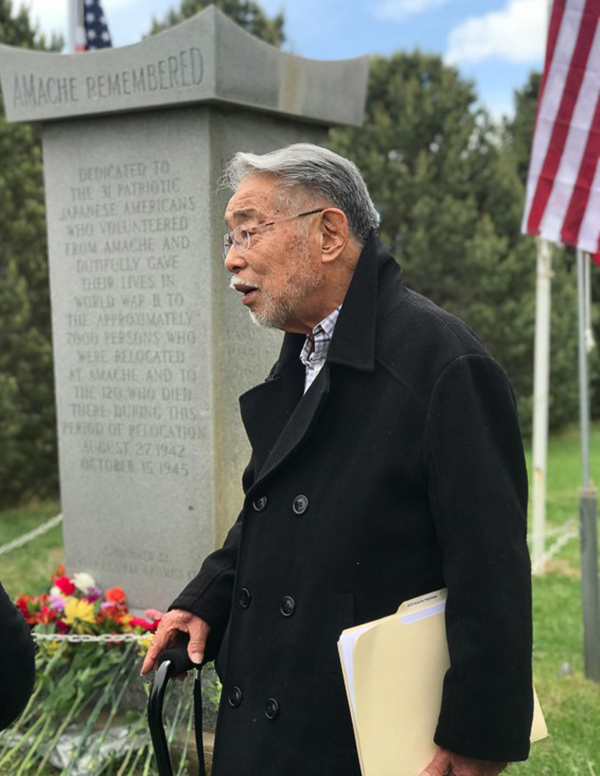
Above: Minoru Tonai speaking at a memorial service at the Amache Cemetery.
Photo by John Tonai.
Right now, it’s a national historic site, and they’re trying to have it become a national park, historic national park. In Granada, there are some people in town, especially the business owners, that want it because with a national park status then people come visit more often, or stop off more, it adds more gravitas to the site by being national park status. And so, it would help business, and being a small, plains town, it’s a dying town, so that’s a positive.
Visit the Amache Japanese-American Relocation Center in Granada, Colo.
I’m working on a new project right now. A lot of teachers started assigning students to interview their relatives about their camp history. A lot of people that the internees started talking about their experiences, and while they’re alive and can remember these things, it is really important. But, especially back then, it was really important to get as much as their story, spend as much time, and money and energy getting their stories told so that we can know what it was like from a firsthand point-of-view.
I’m also starting to notice a disjoint between that and the people that weren’t in the camps whose relatives that were. And so, I started doing a project where I’m asking for people who grew up in a house that had some artwork or something in their house that they’ve known, and it was just some old family thing, and growing up, they eventually when they start asking questions about camp, and they found out that that object had a camp history: whether it was made by somebody in camp, or it was brought back from camp or somehow that it had some kind of connection to the camps. And, I want to photograph the person with the object and then interview them for, what I call, that ‘moment of clarity’ when they got an understanding of what that object really meant and why it was there. Because, I talked to several people that have had these things in their houses, and the people didn’t talk about it, but they had them hanging up in the house, or they had them … they weren’t secreted away anywhere, they weren’t hidden. And so, it seems to me that it’s almost like they wanted to talk about it but couldn’t. And so, this object became this thing that maybe, kind of, was their way of talking about it, or it was just their way of reminding them of their perseverance or hard times. I’d like to do it as much as soon as possible because I’d like the internees to see how, what their thing was affected, their children and their grandchildren and younger.
Descendants of camp internees are invited to contact John Tonai in regards to his current photo project:
CONTACT JOHN TONAI: Descendants of INTERNEEs PHOTO PROJECT
One reason why it’s important to remember is because people have been calling for other minorities to be rounded up and put into camps or prisons … within the past year this has happened. For the only reason being of they’re of an ethnic background, for one reason or another, the leaders of our country do not like.
For what was proven with the Japanese-American camp, at the time I think the most rational people in government had said something like there may be some people that are—they didn’t use the word ‘bad,’ but I’m just going to use the word ‘bad’—because of that we are going to do this to everybody. And so, for people to say because there might be somebody from the Middle East that’s bad, some country from the Middle East that’s bad, to round up everybody from that country, or to round up every Middle Easterner is … horrifying, to say the least.
To understand how if we let that kind of attitude result in action, like the camps, it’s just one of the worse things we can do if we call ourselves Americans. If we pledge allegiance, if we believe in the Constitution, it’s one of the worst things we can do." — John Tonai
— Produced by Katie-Leigh Corder
More Stories
-
Greeley Educator, Alumnus, Honored with National Educator Award for Excellence
Este artículo no está en español.
-
Alumna Named Colorado Teacher of the Year
Este artículo no está en español.
-
Supporting First-Generation College Students to Become Next-Generation Leaders
Este artículo no está en español.
-
Day of the Dead: A Time-Honored Mexican Tradition
Día de Muertos: una tradición mexicana consagrada

